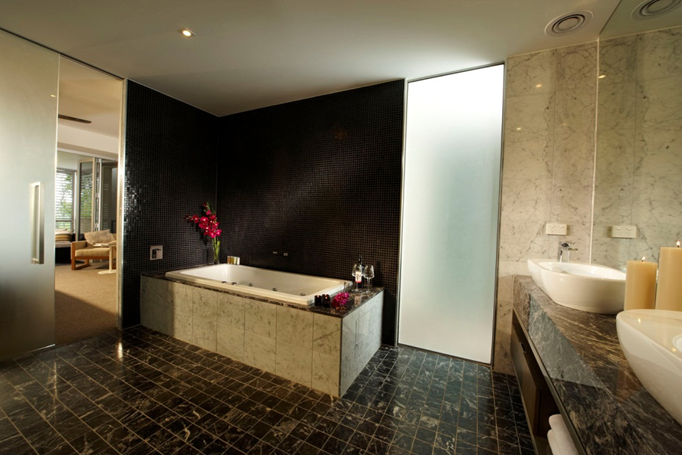- 1 Minute to read
- Print
- PDF
Wet Area Construction - General Principles
- 1 Minute to read
- Print
- PDF
Waterproofed internal areas are predominately residential bathrooms and laundries (including houses, duplexes, apartments, hotels); as well as commercial bathrooms, kitchens and laundries.
These areas are referred to as “wet areas” due to the fact that bath and shower facilities; as well as clothes washing facilities are typically contained within these areas of the building – making them particularly susceptible to the many issues that can arise from waterproofing failure – damaging rooms below them being the major issue.
The residential works for class 1 and 10 buildings are covered by the Building Code of Australia volume 2 part 3.8.1 and Australian Standard 3740
The residential works for class 2 (apartments), class 3 (hotels) and class 4 (managers units) buildings are covered by the Building Code of Australia volume 1 part F1.7 and Australian Standard 3740
The commercial works for class 5,6,7,8 or 9 are covered by the Building Code of Australia volume 1 part F1 and Australian Standard 3740. Kitchens are not referred to in in these areas, but it is sensible to take reasonable precaution under a large scale commercial kitchen for example to waterproof under a bedding layer as required for other high risk wet areas.
So realistically – for any form of “wet area” in any type of building - AS 3740 is the key standard for Waterproofing internal areas and should be referred to for a thorough knowledge of requirements
This policy is divided into 9 areas;
1. Substrate works - formed set downs, wall linings.
2. Plumbing works - Floors (Drainage penetrations).
3. Plumbing works - Walls (Drainage/water services penetrations).
4. Waterproofing works.
5. Mechanical ventilation.
6. Bath installation.
7. Tiling.
8. Inspection/access panel.
9. Bathroom finishes/Glazing.


